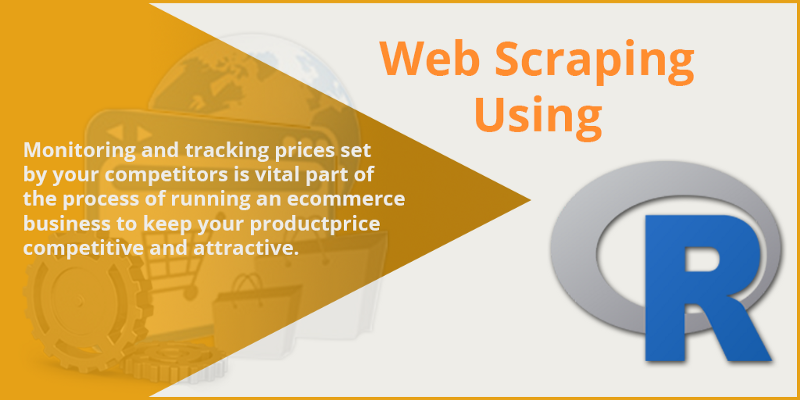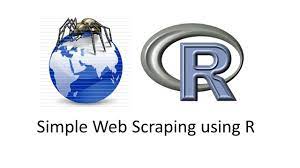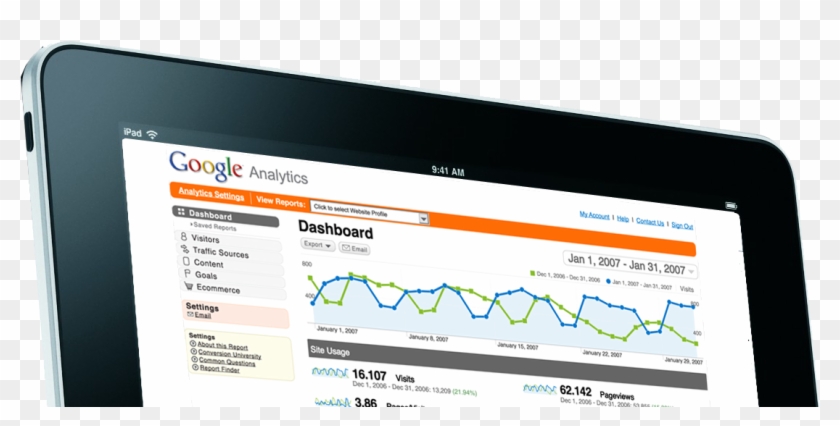How to Do Web Scraping in R: 5 Advanced Techniques

Web scraping in R has become an indispensable skill for data professionals, researchers, and enthusiasts. In this comprehensive guide, we’ll delve into the intricacies of web scraping using R, covering the fundamental concepts and advanced techniques to empower you in harnessing the wealth of data available on the web.
The Power of Web Scraping in R:
Web scraping involves extracting data from websites, allowing you to gather information, perform analyses, and feed your projects with real-time data. R, with its rich ecosystem of packages, is a formidable tool for this task. Let’s explore the fundamental steps to kickstart your web scraping journey.
1. Getting Started with Basic Web Scraping
The first step is understanding the basics of web scraping. The rvest package is your go-to tool for simple scraping tasks. Learn how to send HTTP requests, parse HTML content, and extract data using CSS selectors. A hands-on example will guide you through scraping data from a static webpage.
2. Advanced Techniques with rvest: Dynamic Content and AJAX
As websites increasingly use JavaScript to load dynamic content, rvest alone may fall short. Dive into advanced techniques for handling dynamic content using RSelenium. Learn to interact with JavaScript-rendered pages, handle AJAX requests, and extract data from dynamically loaded elements.
3. Parallel Web Scraping with Future and Furrr
Efficiency matters in web scraping, especially when dealing with large datasets. Explore the power of parallel processing in R using the future and furrr packages. Learn to distribute scraping tasks across multiple cores or nodes, significantly speeding up your data retrieval processes.
4. Responsible Scraping: Throttling and Error Handling
Respectful scraping practices are essential to maintain the health of both your script and the target website. Discover how to implement rate limiting using the polite package to avoid overloading servers. Furthermore, explore error handling and retry logic to enhance the robustness of your scraping scripts.
5. Headless Browsing: Automate with RSelenium
For websites heavily reliant on JavaScript for content rendering, a headless browser is indispensable. Learn to use RSelenium to navigate and interact with websites as a real user would. This section provides a step-by-step guide to scraping dynamic content using a headless browser.
6. Conclusion: Crafting Ethical and Effective Web Scrapers
In conclusion, mastering web scraping in R involves a combination of fundamental knowledge and advanced techniques. Remember to check a website’s terms of service and robots.txt file, ensuring compliance with scraping policies. Monitor your scraping activities and adapt to changes on websites.
Set up the Environment:
- R 4+: R values greater than or equal to 4 are acceptable.
- Building an R web scraper is a wonderful use case for a R IDE such as PyCharm with the R Language for IntelliJ plugin installed and enabled.
- Set Up an R Project in PyCharm
How to Do Web Scraping in R:
Web scraping in R is a valuable skill for extracting data from websites, automating information retrieval, and powering data-driven analyses. The process involves programmatically navigating web pages, fetching HTML content, and extracting relevant data. Here’s a concise guide to get you started:
- First, install the rvest.
- Step 2 is to obtain the HTML page.
- Step 3: Decide Which HTML Elements Are Most Important
- Step 4: Take the Information Out of the HTML Components
- Step 5: Export CSV from the Scraped Data
- Step 6: Compile Everything
1. Essentials with rvest: Begin by using the rvest package, a powerful tool for basic web scraping in R. Learn to send HTTP requests, retrieve HTML content, and use CSS selectors to pinpoint and extract desired information. A quick example might involve extracting data from a table or fetching the text from specific HTML elements.
2. Handling Dynamic Content: Many modern websites use JavaScript to load dynamic content, making traditional scraping methods insufficient. Advance your skills by incorporating RSelenium into your toolkit. This package allows you to navigate through pages and interact with dynamic elements, ensuring you capture all the data you need.
3. Efficiency with Parallel Processing: As your scraping tasks grow in complexity, efficiency becomes crucial. Explore the world of parallel processing in R with packages like future and furrr. This allows you to perform multiple scraping tasks simultaneously, significantly speeding up the overall process.
4. Responsible Scraping Practices: To scrape responsibly, implement techniques such as rate limiting using the polite package. This ensures you don’t overload servers with too many requests, maintaining a harmonious interaction with the website. Incorporate error handling and retry logic for robust scraping scripts that can gracefully handle occasional failures.
5. Headless Browsing for Dynamic Sites: Some websites heavily rely on client-side rendering using JavaScript. To scrape such sites, employ RSelenium headless browsing. This allows you to interact with the website as a user would, ensuring you capture dynamically loaded content.

Web Scraping in R: (5) Advanced Techniques:
You have just explored the fundamentals of R web scraping. It’s time to explore more sophisticated methods.
1) Avoiding blocks:
Avoiding blocks in web scraping involves implementing strategies to mitigate the risk of being detected and blocked by websites. Here are some advanced techniques in web scraping using R to help you avoid blocks:
- User-Agent Rotation:
- Set a variety of user-agents to simulate different browsers and devices.
- Rotate user-agents with each request to mimic human behavior.
headers <- c(
“User-Agent” = “Mozilla/5.0 (Windows NT 10.0; Win64; x64) AppleWebKit/537.36 (KHTML, like Gecko) Chrome/91.0.4472.124 Safari/537.36”,
# Add more user-agents
)
response <- httr::GET(url, httr::add_headers(.headers=headers))
- Request Delays:
- Introduce random delays between requests to avoid triggering rate limits.
- Use the
Sys.sleep()function to pause execution.
delay <- runif(1, 1, 5)
Sys.sleep(delay)
- IP Rotation and Proxies:
- Rotate IP addresses to avoid detection.
- Use proxy servers to make requests through different IP addresses.
# Use a proxy with httr
proxy <- httr::use_proxy(“http://your-proxy-address:port”)
# Or use a service like {proxy} or {rvestproxy}
- Handling Cookies:
- Mimic cookie behavior to appear more like a regular user.
- Use a package like
httrto manage cookies.
handle <- httr::handle(“your_url”)
response <- httr::GET(“your_url”, handle = handle)
5. JavaScript Rendering:
- Some websites load content dynamically using JavaScript.
- Use tools like
RSeleniumto render and interact with JavaScript-based content.
library(RSelenium)
# Start a Selenium server
driver <- rsDriver(browser = “chrome”)
remote_driver <- driver[[“client”]]
# Navigate to a website
remote_driver$navigate(“https://example.com”)
- Session Management:
- Maintain session state across multiple requests.
- Use cookies and session tokens to authenticate.
session <- html_session(“https://example.com/login”)
form <- html_form(session)[[1]]
filled_form <- set_values(form, username = “your_username”, password = “your_password”)
session <- submit_form(session, filled_form)
Remember, always check a website’s terms of service and robots.txt file to ensure compliance with their policies. It’s important to scrape ethically and responsibly. Additionally, monitor your scraping activities and adjust your strategies if you notice any changes in website behavior.
2) Web Crawling in R:
Web crawling in R involves navigating through a website’s structure to collect information systematically. Below are some advanced techniques and R packages for effective web crawling:
- Using
rvestfor Basic Web Crawling:- The
rvestpackage is powerful for basic web crawling and scraping tasks. - Extract links, navigate through pages, and scrape data.
- The
library(rvest)
url <- “https://example.com”
page <- read_html(url)
# Extract links from the page
links <- html_attr(html_nodes(page, “a”), “href”)
# Extract data from specific elements
data <- html_text(html_nodes(page, “p”))
httrPackage for HTTP Requests:- The
httrpackage is useful for handling HTTP requests and responses. - Set headers, handle cookies, and manage sessions.
- The
library(httr)
# Send an HTTP GET request
response <- GET(“https://example.com”)
# Extract content from the response
content <- content(response, “text”)
Concurrency with future and promises:
- Improve crawling speed by implementing parallel processing.
- The
futureandpromisespackages can be used for asynchronous programming.
library(future)
library(promises)
plan(multiprocess)
# Use promises for asynchronous tasks
promises <- lapply(links, function(link) {
future({
# Perform crawling/scraping task for each link
})
})
# Wait for all promises to resolve
all(promises)
politePackage for Rate Limiting:- Implement rate limiting to avoid overloading a website’s server.
- The
politepackage is designed to make requests more politely.
library(polite)
# Make a polite GET request
response <- polite::with_delay(
polite::polite_GET(“https://example.com”),
delay = polite::rate_delay(1) # Adjust delay as needed
)
robotstxtfor Robots.txt Compliance:- Check a website’s robots.txt file to ensure compliance with scraping policies.
- The
robotstxtpackage helps in parsing and interpreting robots.txt.
library(robotstxt)
# Parse robots.txt for a website
txt <- robotstxt::paths_allowed(“https://example.com/robots.txt”, “your-user-agent”)
Seleniumfor JavaScript-Rendered Pages:- Use
RSeleniumto interact with JavaScript-rendered content. - This is useful when a website relies heavily on client-side rendering.
- Use
library(RSelenium)
# Start a Selenium server
driver <- rsDriver(browser = “chrome”)
remote_driver <- driver[[“client”]]
# Navigate to a website
remote_driver$navigate(“https://example.com”)
Always be mindful of ethical scraping practices, respect the terms of service of the websites you are scraping, and avoid overloading servers with too many requests. Monitoring and adapting to website changes is essential for maintaining a reliable web crawling system.
3) Parallel Web Scraping in R:
Parallel web scraping in R can significantly enhance the speed and efficiency of data retrieval by performing multiple tasks simultaneously. The future package is commonly used for parallel processing. Below are advanced techniques for parallel web scraping in R:
- Parallel Processing with
futurePackage:- Use the
futurepackage to parallelize web scraping tasks. - Distribute tasks across multiple cores or nodes.
- Use the
library(future)
# Set up parallel processing
plan(multiprocess)
# List of URLs to scrape
urls <- c(“https://example.com/page1”, “https://example.com/page2”, …)
# Define a function for scraping
scrape_function <- function(url) {
# Your web scraping logic here
# Return the scraped data
}
# Use futures for parallel processing
results <- future_map(urls, scrape_function)
- Batch Processing with
furrrPackage:- The
furrrpackage is an extension ofpurrrfor parallel programming. - Perform batch processing of URLs concurrently.
- The
library(furrr)
# Register a parallel backend
plan(multiprocess)
# Define the function to scrape a single URL
scrape_function <- function(url) {
# Your web scraping logic here
# Return the scraped data
}
# Use furrr to apply the function to multiple URLs concurrently
results <- future_map(urls, scrape_function)
- Throttling Requests with
politePackage:- Use the
politepackage to control the rate of requests made in parallel. - Prevent overloading servers by introducing delays between requests.
- Use the
library(polite)
# Define a polite scraping function
polite_scrape_function <- function(url) {
with_delay(polite_GET(url), delay = rate_delay(1))
}
# Use future_map for parallel processing with throttling
results <- future_map(urls, polite_scrape_function)
Error Handling and Retry Logic:
- Implement error handling and retry mechanisms to deal with occasional failures.
- Use
futureandpurrrfunctions for robust parallel processing.
library(purrr)
library(future)
# Set up parallel processing
plan(multiprocess)
# Define a function with error handling and retries
scrape_function <- function(url) {
tryCatch(
{
# Your web scraping logic here
# Return the scraped data
},
error = function(e) {
# Retry logic here
message(“Error:”, e$message)
Sys.sleep(5) # Add a delay before retrying
recall()
}
)
}
# Use future_map with retrying
results <- future_map(urls, scrape_function)
Always be considerate of the website’s terms of service and avoid aggressive parallel processing that could lead to server overload or IP blocking. Monitor your scraping activities and adjust the level of parallelism based on the website’s response.

4) Scraping Dynamic Content Websites in R:
Scraping dynamic content websites in R involves handling pages where content is loaded dynamically through JavaScript. Traditional methods rvest may not capture dynamically rendered content. Advanced techniques are required using packages like RSelenium and rvest in combination. Here’s an approach:
Using RSelenium for Dynamic Content:
RSeleniumallows automation of web browsers to interact with JavaScript-rendered content.- Start by installing the package:
install.packages(“RSelenium”)
- Example code:
library(RSelenium)
# Start a Selenium server
driver <- rsDriver(browser = “chrome”)
remote_driver <- driver[[“client”]]
# Navigate to the dynamic content page
remote_driver$navigate(“https://example.com/dynamic-page”)
# Retrieve content
content <- remote_driver$getPageSource()[[1]]
# Perform scraping on content
# …
Combining rvest with RSelenium:
- Use
rvestfor parsing HTML after obtaining the dynamically loaded content withRSelenium. - Example:
library(rvest)
library(RSelenium)
# Start a Selenium server
driver <- rsDriver(browser = “chrome”)
remote_driver <- driver[[“client”]]
# Navigate to the dynamic content page
remote_driver$navigate(“https://example.com/dynamic-page”)
# Retrieve content
content <- remote_driver$getPageSource()[[1]]
# Parse HTML with rvest
page <- read_html(content)
# Extract data using rvest functions
# …
Wait for Dynamic Content:
- Websites may take some time to load dynamic content. Use
Sys.sleep()to introduce delays.
# Wait for 5 seconds before retrieving the content
Sys.sleep(5)
Handling AJAX Requests:
- Inspect the network activity in your browser’s developer tools to identify AJAX requests.
- Use the
httrpackage to simulate these requests.
library(httr)
# Simulate an AJAX request
response <- httr::GET(“https://example.com/ajax-endpoint”)
Remember, web scraping involves interacting with websites, and it’s crucial to respect the website’s terms of service. Frequent and aggressive scraping can lead to IP blocking or other actions against your requests. Always check a website’s robots.txt file and terms of service to ensure compliance with scraping policies.

5) Web Scraping with a Headless Browser in R:
Web scraping with a headless browser in R involves using a browser that doesn’t have a graphical user interface, making it suitable for automated tasks. Headless browsers are particularly useful for scraping dynamic websites that rely heavily on JavaScript for content rendering. Below is an example using the RSelenium package to scrape with a headless browser:
Install Required Packages:
- Install the necessary packages:
install.packages(“RSelenium”)
install.packages(“rvest”)
Use RSelenium with a Headless Browser:
- Start by setting up
RSeleniumand connecting to a headless browser. Make sure you have a compatible version of a web driver (e.g., ChromeDriver) installed.
library(RSelenium)
library(rvest)
# Start a Selenium server
driver <- rsDriver(browser = “chrome”, headless = TRUE)
remote_driver <- driver[[“client”]]
# Navigate to the webpage
remote_driver$navigate(“https://example.com”)
# Retrieve the page source
page_source <- remote_driver$getPageSource()[[1]]
# Parse HTML using rvest
page <- read_html(page_source)
# Extract data using rvest functions
# …
library(RSelenium)
library(rvest)
# Start a Selenium server
driver <- rsDriver(browser = “chrome”, headless = TRUE)
remote_driver <- driver[[“client”]]
# Navigate to the webpage
remote_driver$navigate(“https://example.com”)
# Retrieve the page source
page_source <- remote_driver$getPageSource()[[1]]
# Parse HTML using rvest
page <- read_html(page_source)
# Extract data using rvest functions
# …
Interacting with Elements:
- You can interact with elements on the page, wait for elements to load, and extract data.
# Click a button (replace with appropriate selector)
remote_driver$findElement(using = “css”, value = “#myButton”)$clickElement()
# Wait for an element to be present (replace with appropriate selector)
remote_driver$findElement(using = “css”, value = “#myElement”)$getElementAttribute(“innerText”)
# Click a button (replace with appropriate selector)
remote_driver$findElement(using = “css”, value = “#myButton”)$clickElement()
# Wait for an element to be present (replace with appropriate selector)
remote_driver$findElement(using = “css”, value = “#myElement”)$getElementAttribute(“innerText”)
Handling AJAX Requests:
- Use
RSeleniumto handle AJAX requests or wait for the page to load dynamically.
# Wait for 5 seconds (adjust as needed)
remote_driver$setTimeout(type = “script”, milliseconds = 5000)
Close the Browser:
- Always close the browser when you are done scraping.
# Close the browser
remote_driver$close()
Note: Ensure that you have the necessary web driver executable in your system’s PATH or provide its path explicitly using the extraCapabilities argument in rsDriver.
Always respect a website’s terms of service and robots.txt file when web scraping. Additionally, consider the ethical implications of web scraping and ensure that your scraping activities are in compliance with legal and ethical standards.
Recap:
In conclusion, advanced techniques in web scraping in R empower users to navigate the complexities of modern websites, extract dynamic content, and parallelize tasks for increased efficiency. Leveraging tools like RSelenium, rvest, and other packages provide a versatile toolkit for handling different scraping scenarios.
Key takeaways from the advanced techniques include:
- Dynamic Content Scraping:
RSeleniumenables interaction with JavaScript-rendered content, making it crucial for scraping dynamic websites. Combining it withrvestallows for comprehensive handling of both static and dynamically loaded content. - Parallel Processing: Utilizing the
futureandfurrrpackages facilitate parallel web scraping, distributing tasks across multiple cores or nodes. Implementing throttling mechanisms with thepolitepackage ensures responsible and respectful scraping practices. - Headless Browsing: Scraping with a headless browser, as facilitated by
RSelenium, allows for a more automated and headless approach, ideal for scenarios where interaction with a graphical user interface is unnecessary. - Error Handling and Retry Logic: Robust scraping scripts incorporate error handling and retry mechanisms to deal with occasional failures gracefully. This enhances the resilience of scraping processes, ensuring more reliable data retrieval.
Remember to adhere to ethical scraping practices, respect the terms of service of the websites being scraped, and stay mindful of rate limits and potential IP blocking. Continuous monitoring and adaptation to changes in website structure or behavior are essential for maintaining a successful and responsible web scraping operation.
See Also:
- Unveiling the Distinctions: Web Crawler vs Web Scrapers
- How to Make Money with Web Scraping Using Python
- How to Type Cast in Python with the Best 5 Examples
- Best Variable Arguments in Python
- 5 Best AI Prompt Engineering Certifications Free
- 5 Beginner Tips for Solving Python Coding Challenges
- Exploring Python Web Development Example Code
- “Python Coding Challenges: Exercises for Success”
- ChatGPT Prompt Engineering for Developers:
- How to Make AI-Generated Video|AI video generator
- 12 Best Python Web Scraping Tools and Libraries with Pros & Cons
- 7 Best Python Web Scraping Library To Master Data Extraction




